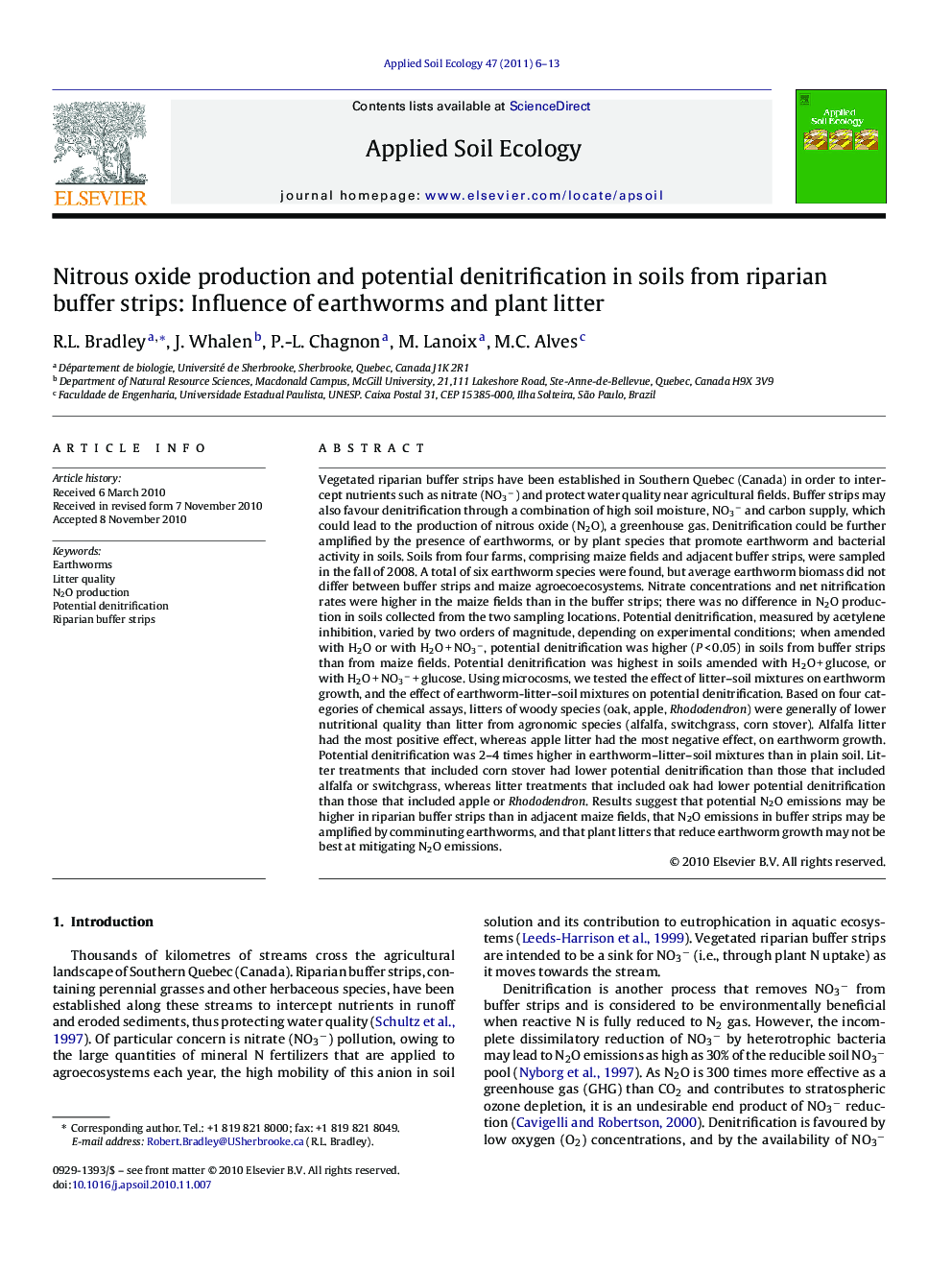| کد مقاله | کد نشریه | سال انتشار | مقاله انگلیسی | نسخه تمام متن |
|---|---|---|---|---|
| 6297960 | 1304229 | 2011 | 8 صفحه PDF | دانلود رایگان |

Vegetated riparian buffer strips have been established in Southern Quebec (Canada) in order to intercept nutrients such as nitrate (NO3â) and protect water quality near agricultural fields. Buffer strips may also favour denitrification through a combination of high soil moisture, NO3â and carbon supply, which could lead to the production of nitrous oxide (N2O), a greenhouse gas. Denitrification could be further amplified by the presence of earthworms, or by plant species that promote earthworm and bacterial activity in soils. Soils from four farms, comprising maize fields and adjacent buffer strips, were sampled in the fall of 2008. A total of six earthworm species were found, but average earthworm biomass did not differ between buffer strips and maize agroecoecosystems. Nitrate concentrations and net nitrification rates were higher in the maize fields than in the buffer strips; there was no difference in N2O production in soils collected from the two sampling locations. Potential denitrification, measured by acetylene inhibition, varied by two orders of magnitude, depending on experimental conditions; when amended with H2O or with H2O + NO3â, potential denitrification was higher (P < 0.05) in soils from buffer strips than from maize fields. Potential denitrification was highest in soils amended with H2O + glucose, or with H2O + NO3â + glucose. Using microcosms, we tested the effect of litter-soil mixtures on earthworm growth, and the effect of earthworm-litter-soil mixtures on potential denitrification. Based on four categories of chemical assays, litters of woody species (oak, apple, Rhododendron) were generally of lower nutritional quality than litter from agronomic species (alfalfa, switchgrass, corn stover). Alfalfa litter had the most positive effect, whereas apple litter had the most negative effect, on earthworm growth. Potential denitrification was 2-4 times higher in earthworm-litter-soil mixtures than in plain soil. Litter treatments that included corn stover had lower potential denitrification than those that included alfalfa or switchgrass, whereas litter treatments that included oak had lower potential denitrification than those that included apple or Rhododendron. Results suggest that potential N2O emissions may be higher in riparian buffer strips than in adjacent maize fields, that N2O emissions in buffer strips may be amplified by comminuting earthworms, and that plant litters that reduce earthworm growth may not be best at mitigating N2O emissions.
Research highlightsⶠDenitrification may be higher in riparian buffer strips than in adjacent fields. ⶠN2O production with the addition of NO3 and H2O was higher in buffer strip soils. ⶠAlfalfa litter increased earthworm growth more so than other litter types. ⶠEarthworms stimulated potential N2O production.
Journal: Applied Soil Ecology - Volume 47, Issue 1, January 2011, Pages 6-13